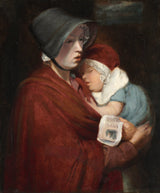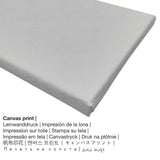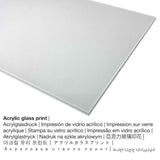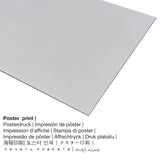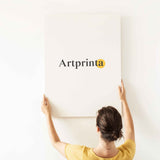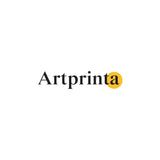John Opie, narị afọ nke 18 - Onye na-agụ egwu n'okporo ámá na nwa - mbipụta nka mara mma
Ụtụ gụnyere. Mbupu gbakọrọ na ndenye ọpụpụ.
Nkọwapụta akụkọ
John Opie painted the 18th narị afọ sere Street Singer and Child. The original had the size: Framed: 100 x 87,5 x 11 cm (39 3/8 x 34 7/16 x 4 5/16 in); Unframed: 76,5 x 64,3 cm (30 1/8 x 25 5/16 in). Oil on canvas was applied by the British artist as the technique for the masterpiece. Inscribed across book: "LOVE/CLOWN (N or R). is the masterpiece's inscription. Today, the work of art is part of the digital art collection of Velọ ihe ngosi nka nke Cleveland, nke bụ otu n'ime ụlọ ngosi ihe mgbe ochie na-ewu ewu n'ụwa nile nke na-ewu, na-echekwa, na-amụ ihe, ma na-ekesa nchịkọta nkà ya pụtara ìhè site n'oge niile na akụkụ nke ụwa, na-emepụta akwụkwọ mmụta na nghọta ọhụrụ, ebe ọ na-eje ozi dị ka ebe ọha na eze na ọgụgụ isi obodo ya. Site n'ikike nke: Velọ ihe ngosi nka nke Cleveland (ikikere: ngalaba ọha). Ebe kredit nke ọrụ nka: Onyinye nke Mr. na Oriakụ JH Wade. Ọzọkwa, nhazi nke mmepụta dijitalụ dị n'ime Eserese usoro ma nwee oke nke 1: 1.2, nke pụtara na ogologo bụ 20% mkpụmkpụ karịa obosara. The painter John Opie was an artist, whose art style can primarily be classified as Rococo. The Rococo painter lived for a total of 46 afọ a mụrụ ya n'afọ 1761 in Saint Agnes, Cornwall, England, United Kingdom and died in the year 1807.
Họrọ ihe ị ga-atụkwasị n'ụlọ gị
Maka mbipụta nka ọ bụla mara mma anyị na-enye ụdị nha na ihe dị iche iche. Anyị na-ahapụ gị ka ịhọrọ nha na akụrụngwa ọkacha mmasị gị n'etiti nhọrọ nhazi ngwaahịa ndị a:
- Poster (akwa akwa akwa): The Artprinta poster is a UV printed flat canvas with a fine surface texture. Please keep in mind, that depending on the size of the poster we add a white margin 2-6cm round about the work of art, which facilitates the framing with your custom frame.
- Aluminom dibond mbipụta (ọla): This is a metal print manufactured on alu dibond material with an impressive effect of depth. For the Direct Aluminium Dibond option, we print the selected artpiece onto the surface of the aluminum material.
- Ugogbe acrylic ebipụtara: A glossy print on acrylic glass, often denoted as a UV print on plexiglass, makes an original work of art into décor.
- Kwaaji: A UV printed canvas mounted on a wooden frame. A canvas makes the plastic look of three-dimensionality. What is more, canvas generates a cosy and pleasant atmosphere. Your canvas of this artpiece will allow you to transform your into a large collection piece. The great advantage of canvas prints is that they are relatively low in weight, meaning that it is easy and straightforward to hang up your Canvas print without the help of extra wall-mounts. Because of thatcanvas prints are suitable for any type of wall.
Nkwupụta iwu: We try what we can to depict our products as accurately as possible and to showcase them visually. Please keep in mind that the tone of the print materials and the imprint can diverge somehwat from the representation on your device's screen. Depending on the screen settings and the condition of the surface, not all colors are printed as exactly as the digital version. Considering that the are printed and processed by hand, there might as well be slight deviations in the motif's size and exact position.
Banyere edemede a
| Ụdị ngwaahịa: | ọrụ mgbidi |
| Mmeputakwa: | dijitalụ mmeputakwa |
| Usoro mmepụta: | Mbipụta UV / dijitalụ |
| Nlụpụta: | German mmepụta |
| Stockdị ngwaahịa: | a na-achọ |
| Ihe eji eme atụmatụ: | ihe osise nka, nka mgbidi |
| Nhazi onyonyo: | nhazi ihe osise |
| Oke akụkụ onyonyo: | 1: 1.2 |
| Nsonaazụ: | ogologo bụ 20% mkpụmkpụ karịa obosara |
| Ụdị akwa: | acrylic glass print (nwere ezigbo mkpuchi iko), mbipụta akwụkwọ mmado (akwụkwọ kwaaji), mbipụta ọla (aluminium dibond), mbipụta akwụkwọ. |
| Mbipụta kanvas (akwa akwa na etiti ihe ndọtị): | 50x60cm - 20x24", 100x120cm - 39x47", 150x180cm - 59x71" |
| Mbipụta iko acrylic (nwere ezigbo mkpuchi iko) dị iche iche: | 50x60cm - 20x24", 100x120cm - 39x47" |
| Mbipụta akwụkwọ mmado (akwụkwọ kwaaji): | 50x60cm - 20x24", 100x120cm - 39x47" |
| Nha ebipụta aluminom: | 50x60cm - 20x24", 100x120cm - 39x47" |
| Nhazi nke nnomi nka: | mmeputakwa na-enweghị isi |
Iberibe nkọwa nka
| Aha ọrụ nka: | "Street Singer and Child" |
| Nhazi nka: | sere |
| Okwu nche anwụ: | nka nka |
| oge: | 18th narị afọ |
| Ọkara nke ihe osise izizi: | mmanụ na kwaaji |
| Akụkụ izizi: | Nhazi: 100 x 87,5 x 11 cm (39 3/8 x 34 7/16 x 4 5/16 na); Edebereghị: 76,5 x 64,3 cm (30 1/8 x 25 5/16 na) |
| Akara aka nka nka: | inscribed across book: "LOVE/CLOWN (N or R). |
| Egosiputara na: | Velọ ihe ngosi nka nke Cleveland |
| Ebe ngosi nka: | Cleveland, Ohio, United States nke America |
| Weebụsaịtị nke ihe ngosi nka: | www.clevelandart.org |
| Akwụkwọ ikike nka: | ngalaba ọha |
| Site n'aka: | Velọ ihe ngosi nka nke Cleveland |
| kreditline ọrụ nka: | Onyinye nke Mr. na Oriakụ JH Wade |
Ozi omenka
| aha: | John Opie |
| Aha ndị ọzọ: | John Opie, Opie John, Opie, J. Opie R. A., J. Opie R.A., John Opie R. A., opie j., Opie R.A., J. Opie, Opie R. A., John Opie Esq., Mr. Opie, J. Opie Esq., opie john, jone opie |
| okike onye nka: | nwoke |
| Nationality: | British |
| Ọrụ onye na-ese ihe: | onye na-ese ihe |
| Mba onye si: | United Kingdom |
| nhazi ọkwa: | nna ukwu ochie |
| Ụdị nka: | Rococo |
| Nwụrụ na afọ nke: | 46 afọ |
| Afọ ọmụmụ: | 1761 |
| Obodo: | Saint Agnes, Cornwall, England, United Kingdom |
| Afọ nwụrụ: | 1807 |
| Obodo ọnwụ: | London, Greater London, England, United Kingdom |
Enwere ikike nwebiisinka © - Artprinta (www.artprinta.com)
General specifications from the museum's website (© Copyright - The Cleveland Museum of Art - Velọ ihe ngosi nka nke Cleveland)
The son of a Cornish coal miner, John Opie sympathized with the British working classes. This painting demonstrates his interest in an honest portrayal of British street life, a sympathy rarely seen in the work of other British artists of his generation, who often presented lower classes more coldly. Much of Britain's population at this time was poor, but beggars and street vendors had a particularly low status. Street singers were often sellers of goods. By focusing the composition tightly on the woman and not including any wares, Opie makes the viewer recognize her humanity; moreover, he emphasizes the connection between mother and child. The singer is working to feed her baby, evoking sympathy from the viewer.

